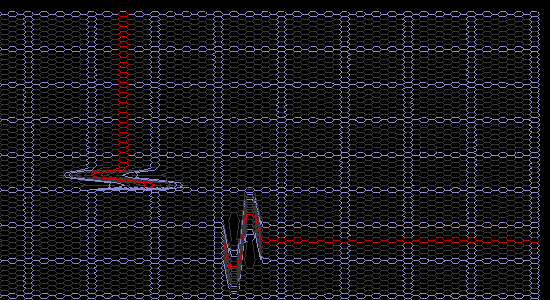Interferometer Based
Gravitational Wave Detectors
Will Fail
Below are two foamy ether simulations that demonstrate how photons travel in an interferometer type gravitational wave detector. The top simulation shows two photons traveling perpendicular to each other just as they would in detectors like LIGO, Virgo and GEO600. Since no gravitational wave is present, the length of the two arms are equal and the photons arrive at the edges at equal times.
The bottom simulation shows how space is distorted while a gravitational wave is present. It is stretched in the horizontal 'x' direction and compressed in the vertical 'y' direction. Notice that even though the photon in the 'x' direction has a greater distance to travel than the photon in the 'y' direction, they still arrive at the edge at the same time. This is where foamy ether theory (FET) differs from conventional physics. Mainstream physics assumes that the photons will travel at the same speed, thereby arriving at the edge at different times; the photon travelling in the 'y' direction is assumed to arrive at the edge before the photon travelling in the 'x' direction finishes its journey. Mirrors are placed at the end of each path to reflect the photons which are then recombined at a photo detector and analysed to see if the two photons are out of phase. FET predicts that this method will NOT work!
The two simulations below prove that regardless of how much space is stretched or compressed, a photon will travel a larger distance because the speed of light increases proportionately with the stretching of space. These simulations are built on a model where a series of springs and dampers are assembled in a hexagonal, two dimensional array that simulates a tightly stretched foam or web (see 3D Simulations). This web like structure, I believe, provides a physical model that accurately emulates the behaviour of space. No equations required!

No gravitational wave; space is not distorted.
Photons reach the ends at the same time.

